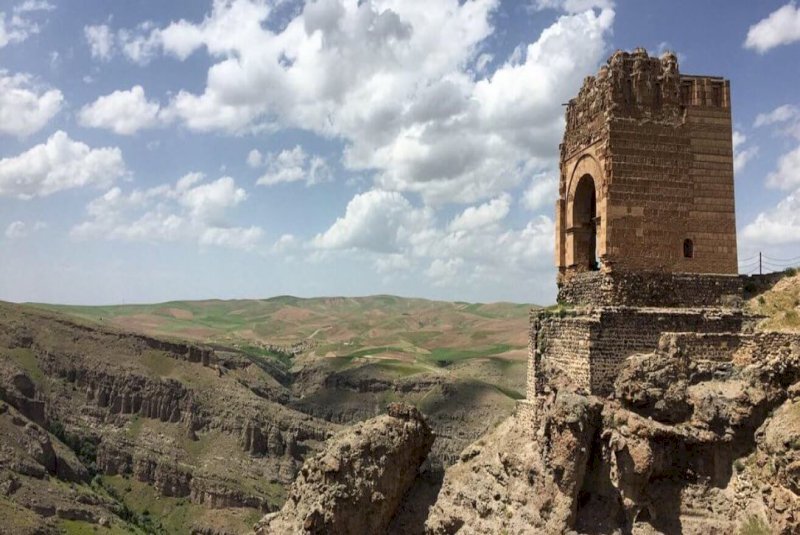Ancient castle in northwest Iran to be restored

TEHRAN – Zahhak Castle, in Hashtroud, East Azarbaijan province, is planned to undergo some rehabilitation works, the provincial tourism chief has said.
Built around 2000 BC, Zahhak castle is one of the lesser-known tourist attractions of the northwestern province. It was used as a government building and later as a fire temple in the times of the Parthians (247 BC – 224 CE).
Strengthening the stone foundations, repairing the walls, and documenting the excavated relics are parts of the project, Ahmad Hamzehzadeh announced on Wednesday.
Due to the fact that Zahhak Castle is the only Parthian-era work remaining in the northwest of the country, the restoration of this historical castle is always on the agenda of the province’s Cultural Heritage, Tourism, and Handicrafts Department, he noted.
Perched on top of a hill near Hashtroud, northwest Iran, the castle contains depictions of animals and symbols that show what life was like for the royalty in ancient Iran. It includes a square-shaped hall made of bricks built during the Parthia period. During this time, Zoroastrianism was the religion of the ruling kings, who likely used part of the castle for a fire temple.
The castle is named after a Persian legend, Zahhak is the name of an Arab king who conquered and ruled over ancient Iran. The story is recounted in the Shahnameh, or Book of Kings, written by Ferdowsi. Kawa is the hero in this particular story, who rescues his Kurdish people in Iran from Zahhak's control.
Zahhak castle also served as a military defense during the Parthian era given its position close to the Iranian border with other nations in the northwest, including Turkey and Armenia.
Soaked in history and culture for millennia, Tabriz, which is the capital of East Azarbaijan, embraces several historical and religious sites, including the Jameh Mosque of Tabriz and Arg of Tabriz, and UNESCO-registered Tabriz Historic Bazaar Complex to name a few.
The city became the capital of the Mongol Il-Khan Mahmud Gazan (1295–1304) and his successor. Timur (Tamerlane), a Turkic conqueror, took it in 1392. Some decades later the Kara Koyunlu Turkmen made it their capital, it was when the famous Blue Mosque was built in Tabriz.
The city retained its administrative status under the Safavid dynasty until 1548 when Shah Tahmasp I relocated his capital westward to Qazvin. During the next two centuries, Tabriz changed hands several times between Persia and Ottoman Empire. During World War I, the city was temporarily occupied by Turkish and then Soviet troops.
The ancient city was declared a world craft city of carpet weaving by the World Craft in 2016. It also bore the title of 2018 Islamic Tourism Capital.
ABU/MG
